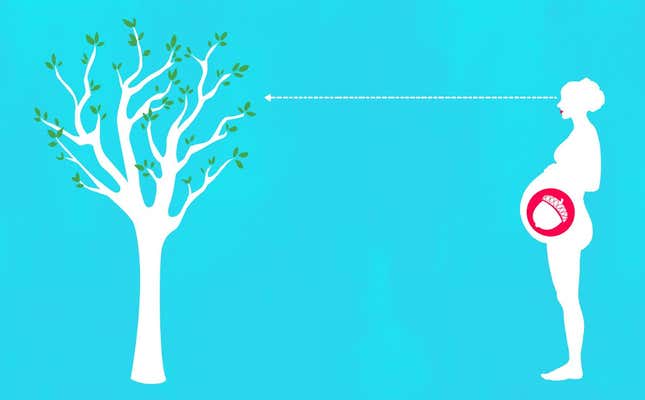Why Are We Still So Paranoid About What Pregnant Women See?
In Depth

There’s a scene on the CBS show Criminal Minds in which JJ, a pregnant FBI profiler, halts a conversation about a killer to put headphones over her pregnant belly. She tells the others she doesn’t want her child to hear the gory details of the conversation, as if talk of dismembered women will permanently scar the developing fetus still inside of her. The rest of the team of analytical thinkers readily assent to JJ; no questions are asked.
When I watched this scene, I was folding onesies for my own child, who right then, was wiggling inside my womb, making me constipated and nauseous. When my mom called a few minutes later, she balked when I told her which show I was watching. “What about the baby?” she said.
The barrier between mother and child is literally permeable and philosophically up for debate. A defining factor of pregnancy is the list of things you’re forbidden from putting in your body, as not to harm your fetus: alcohol, drugs, medication, lunch meat, anything otherwise impure. You are asked, even, to refrain from allowing certain things to enter your mind: studies on pregnant woman show links between increases in maternal stress and fetal stress, and maternal stress has even been linked to preterm birth and schizophrenia.
Those cause-and-effect links are proven and tangible—while other links between mother and baby slip into a nearly spiritual realm. Long after a child has left its mother, its fetal cells remain lodged inside the mother, crossing the placenta and becoming part of the bloodstream. Mothers, too, leave their cells in their children: these cells cross the placenta in the opposite direction, strengthening the immune system and, well—no one is quite sure what else.
The science leads easily to superstition. Today, a thriving contemporary market of goods exists to promote fetal positivity and protect your baby from the wicked influences of the world. Bellybuds, the $49.99 sound system for your baby, advertises its ability to make a positive maternal impression: to transmit sound into the womb, so parents can “deliver audio stimulation to their developing child to start creating those memories now.” Bellypod, a tampon-like speaker that can be inserted in the vagina, takes that idea even further.
The logic is ancient. Upset the mother and ruin the baby; if the mother is sweet, the child will be sweet too. Expectant mothers are responsible for a double version of the traditional idea of the woman’s body, generally thought to be either pure or defiled. It’s a logic rooted in biological fact—the state of a pregnant woman’s body does affect her fetus—that has been twisted into an equally powerful psychological fiction, which extends to a woman’s mind. The idea that what a pregnant woman sees and thinks about will manifest in her unborn child dates back centuries, and still persists today.
In 1897, CJ Bayer wrote a pleading appeal to pregnant women in his book Maternal Impressions:
“The basic principle which we wish to impress upon the reader is: That a mother who is in the condition to which attention is called, who has an imperfectly formed object, such as a monstrosity of any kind in her mind, and who dwells upon it, or who has impure or vulgar thoughts and mean or unholy ideas, or who has murder in mind—that is, would like to kill her unborn babe—will impress such a formation of the brain structure of her offspring, as will form its desires in the direction which her thoughts have taken.”
But the underlying theory can be found as far back as the Bible, when Jacob makes a deal with his father-in-law Laban to only take the spotted or striped goats in the flock as his dowry payment for Rachel and Leah. Jacob vows to Laban that if an all-white goat is found among his flock, it will be considered stolen.
So, in order to ensure his flock remained spotted, Jacob has branches cut and the bark peeled from them in strips so that the inner wood showed. He makes his flocks cross over these striped branches on their way to eat and drink. He makes the strong ones mate in front of the branches, so they would be dark and spotted. The weak ones he sets apart from the branches, so they would be born white and sent back to Laban.
-

-

-

-

-

-

-

-

-

-

-

-

-

-

-

-

-

-

-

-

-

-

-

-

-

-

-

-

-

-

-

-

-

-

-

-

-

-

-

-








































